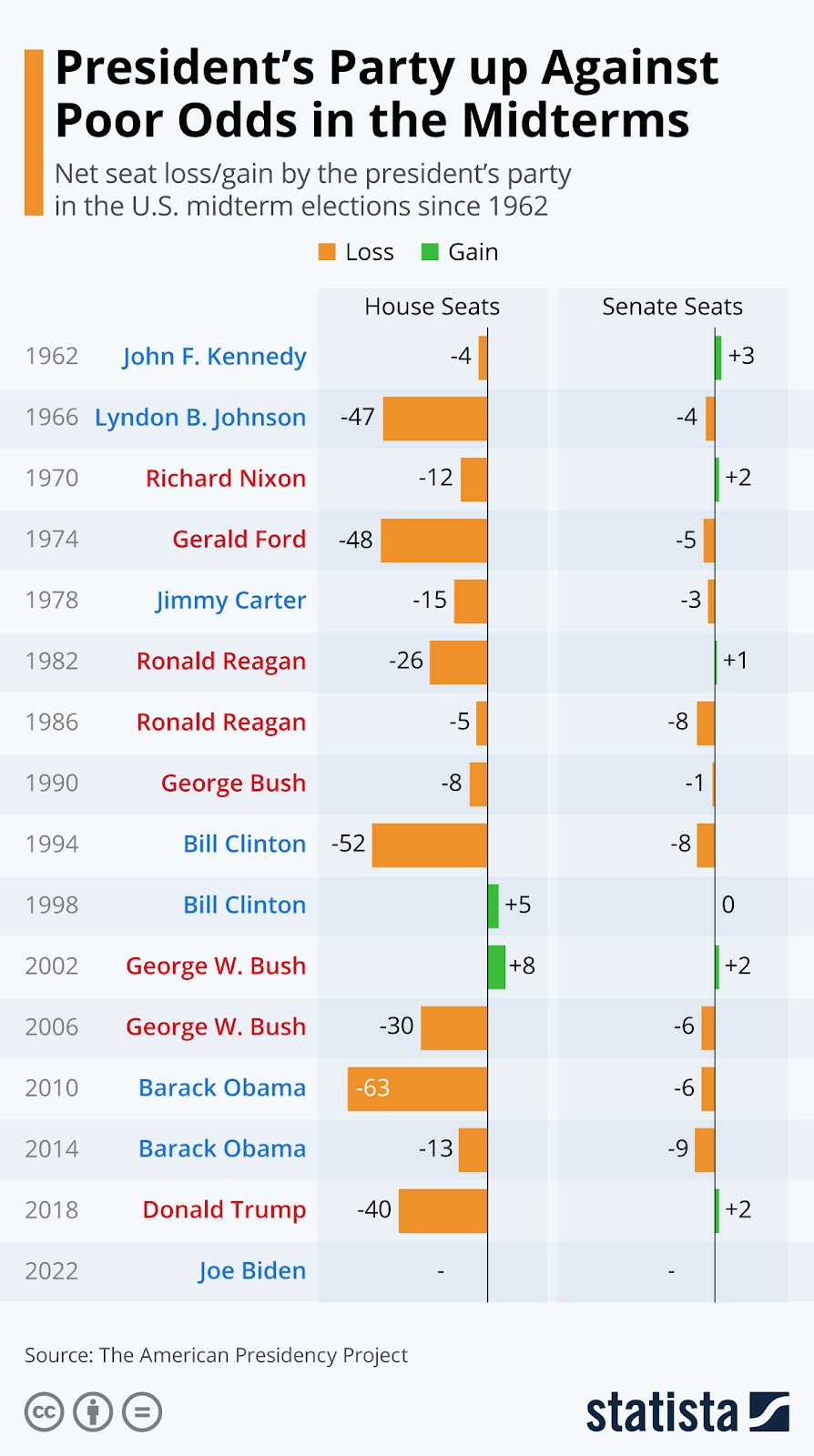The 2026 battlefield needs to be bigger
A new report shows that Democrats are leaving winnable seats on the table
Our partners at Welcome Democracy Institute closed the books on the 2024 cycle yesterday with the final release of the Congressional Competition Index. The good news was Democrats spent less money on unwinnable districts. The bad news is that there are still districts that are within the bounds of competition that aren’t fully funded.
This cycle, Democrats should aim to have a big battlefield: midterms are bad for incumbent parties, and the last time Trump was in office, his party lost 40 seats in the midterm. Democrats left seats on the table in 2024. Let’s make sure they don’t this cycle (support our slate here).
Celebrating Democracy Champions
Before we dive into the seats Democrats should contest, I wanted to quickly shout-out some democracy champions. These candidates often go uncelebrated because their districts are just outside the typical zone of party competition. But by running strong campaigns, they can force incumbents to moderate or put races on the border. In Arizona’s 8th, Gregory Whitten did just that. Though the district is R+10, Whitten raised $498,000 and over-performed by 3 points. In Arizona’s 2nd, Jonathan Nez put up one of the top over performances in the country against Eli Crane. Crane is an election denier who was backed in his first campaign by McCarthy. The establishment thought he would toe the party line. But he quickly proved himself to be an ultra-MAGA and Nez raised $5.4 million to send that message to voters. Lastly, Jennifer Adams raised $258,000 in her race against Cory Mills, Dark MAGA Congressman (read about the domestic violence allegations against him here). We hope all three candidates come back this year, where a more favorable environment could put these incumbents on the defensive.
Undercompeted Races
Sadly, there were a number of races where Democrats should have put more resources, but didn’t. In 2026, these races offer huge pick-up opportunities if Democrats contest them.
Tariff Town
One place where Democrats need to invest in 2026 is Iowa. We’ve already seen two massive overperformances in state-level elections. Iowa will also be ground zero for Trump’s tariffs - a big agricultural producer hurt by retaliation. Democrats should field strong candidates in Iowa 2nd, where they raised $508,000 in 2024, dwarfed by Hinson’s $5.6 million haul.
Ohio is another state impacted due to the state’s farming and auto and construction industries. Democrats entirely abandoned OH-14 (R+9), and did not fully contest OH-15 (R+6) and OH-10 (R+4), raising $358,000 and $198,000 respectively.
Fight Gerrymandering
There were four seats that Democrats entirely abandoned and three of them are in North Carolina: NC-03 (R+10), NC-07 (R+7) and NC-10 (R+10) . That’s not surprising - Republicans did a rare (though increasingly common) mid-cycle gerrymander in the state. But these races could be competitive in 2026 as the state moves in a more Democratic direction driven by college-educated voters entering the research triangle.
Other Key Findings
Contesting Democracy
Throughout the cycle, both parties brought more races into full competition, a welcome sign. By the end of the 2024 cycle, effective competition has increased to 64% of districts, up from 59% at the end of Q3, leaving fewer “Democracy Deserts.” The number of fully competitive seats decreased from 2022 to 2024. In 2022, 72 of those 100 seats were fully competitive compared to 64 in 2024. While the number of deserts decreased throughout the cycle, the fact that parties contested fewer districts in 2024 is a worrying sign for competition. Democrats did a better job contesting a broad map—only 10 of the under-contested districts were held by Republicans, compared to 26 held by Democrats.
Waste not, want not
Parties wasted less money in entirely unwinnable districts this cycle. Republicans spent $6 million in 4 Democratic-held seats that the Welcome Democracy Institute rates as unwinnable. On the other side, Democrats spent $9.4 million in 5 GOP seats rated as unwinnable.
Democrats significantly reduced their wasteful spending on the Marjorie Taylor Greene race, from $17 million in 2022 to $4 million in 2024. The MTG race was the biggest source of wasted money for Democrats.
In total, both parties spent $77.2 million on these 9 unwinnable seats.
Conclusion
Our analysis does not discuss the many seats, like Wisconsin’s 3rd, where Democrats ran effective candidates who over-performed and should come back and finish the job (Rebecca Cooke recently announced a re-match challenge). We are focused on districts where Democrats need to recruit strong candidates to put the race on the map.




